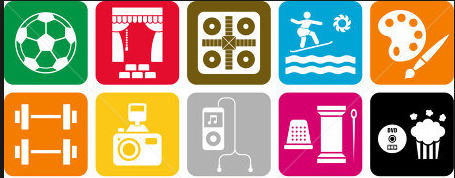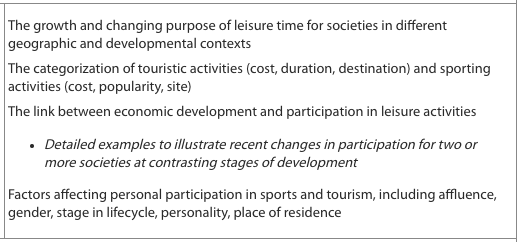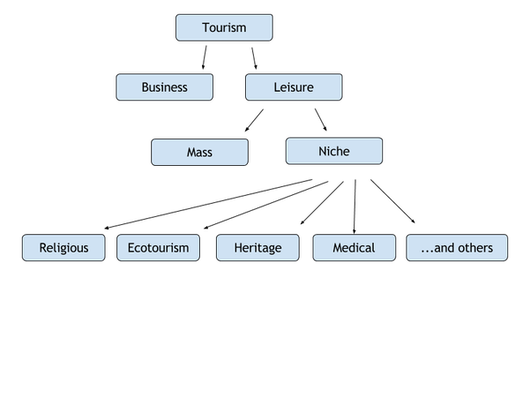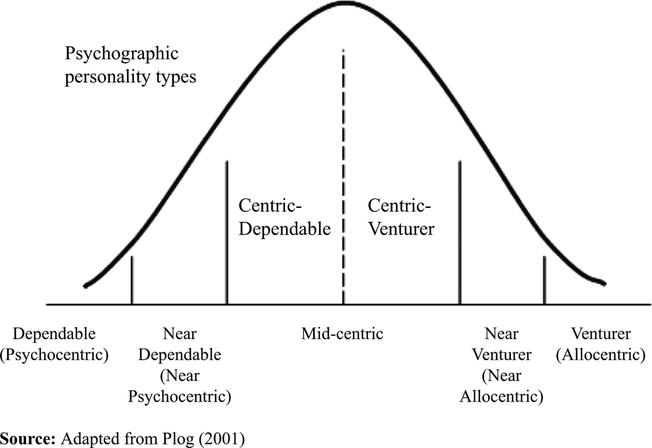Leisure, tourism, sport homepage
1. Changing leisure patterns
Syllabus Link: How human development processes give rise to leisure activities
Growth and Changing Purpose
The growth and changing purpose of leisure time for societies in different geographic and developmental contexts
|
|
|
The Categorization of Tourism
The categorization of touristic activities (cost, duration, destination) and sporting activities (cost, popularity, site)
|
|
|
|
Reading: Types of tourism
The Link with Economic Growth
The link between economic development and participation in leisure activities
- Detailed examples to illustrate recent changes in participation for two or more societies at contrasting stages of development
|
|
|
|
Factors Affecting Participation
Factors affecting personal participation in sports and tourism, including affluence, gender, stage in lifecycle, personality, place of residence
Tourism
|
|
|
Sorting: Factors contributing to tourism growth
Activity: Impact of stages in the family life cycle
Explanation: Plog's Continuum
Reading: Geofile - Changes in Global Tourism



